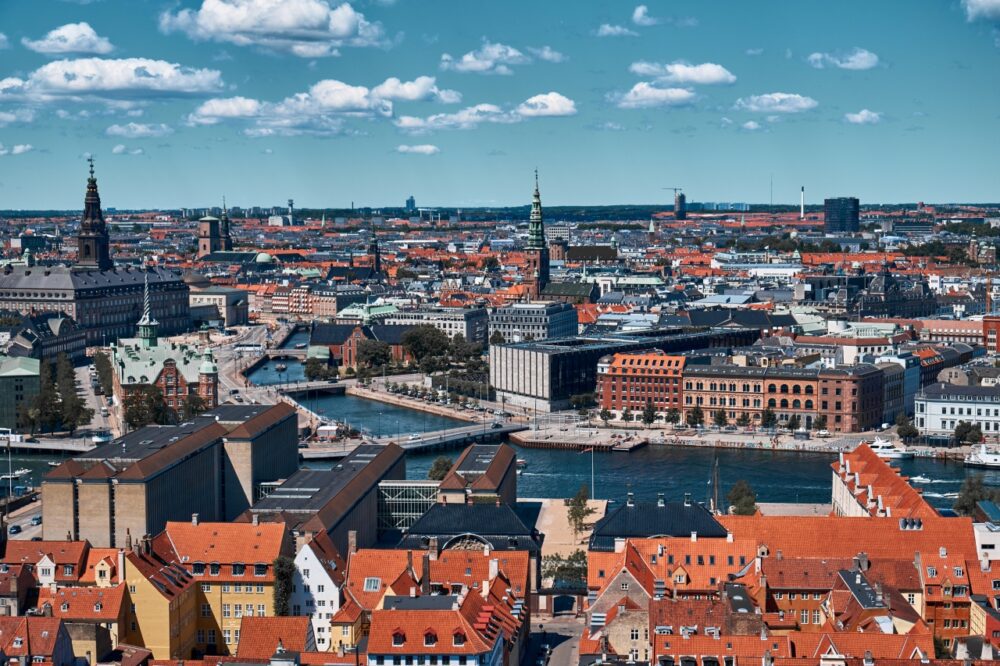
Introduction
Denmark is a small country with a big heart. Known for its design, quality of life, and a perfect balance between modern living and rich history, it’s one of those places that seems to have everything figured out. From the buzz of Copenhagen to the windswept beaches of the Jutland Peninsula, Denmark offers a diverse array of experiences for every traveller. You can spend your mornings strolling through Viking ruins and your afternoons sipping coffee in a sleek, minimalist café. The beauty of Denmark is that it’s as charming as it is accessible.
When I first visited, I was struck by how easy-going life felt here. The Danes have perfected the art of hygge—that cosy feeling of contentment—and it’s contagious. Whether you’re cycling through Copenhagen, exploring the country’s green spaces, or diving into its rich cultural scene, you’ll feel that same relaxed, welcoming vibe everywhere you go. Here’s why Denmark should be on your travel radar.
Table of Contents
Reasons You Should Visit Denmark
1. Impeccable Design and Architecture
Denmark is globally renowned for its innovative design and architecture. You’ll see it in everything from the iconic Danish Modern furniture to the clean, contemporary lines of Copenhagen’s buildings. Whether you’re a design enthusiast or just someone who appreciates beauty in everyday objects, you’ll love Denmark’s focus on simplicity and function.
Copenhagen, in particular, is like an open-air gallery of sleek Scandinavian design. The Danish Architecture Centre and Designmuseum Danmark are must-visits if you want to dive deeper into the country’s design heritage. Even the metro stations and public spaces feel carefully curated, making Denmark a visual feast that’s hard to find elsewhere.
2. Cycling Culture and Green Living
Denmark’s cycling culture is legendary. In Copenhagen alone, you’ll find more bikes than cars, and the city is consistently ranked as one of the most bike-friendly places in the world. It’s the best way to explore, whether you’re pedalling past the royal palaces or cycling along the city’s colourful waterfronts. I rented a bike in Copenhagen and spent the day gliding through the streets—everything was just a short ride away.
But it’s not just cycling. Denmark leads the way in green living, with its emphasis on sustainability and eco-friendly practices. You’ll find organic food in abundance, wind turbines lining the coastline, and public transportation systems that make it easy to get around without a car. It’s a country that takes its environment seriously, and it shows in the clean streets, fresh air, and serene parks scattered across every city.
3. A Strong Sense of History
For a small country, Denmark has a big history. Once the home of the Vikings, this nation’s past is filled with fascinating stories of exploration, royalty, and maritime prowess. One of my favourite experiences was visiting Roskilde, where you can explore the Viking Ship Museum and see real Viking longships that were pulled from the bottom of the sea. Walking through the museum and learning about the Vikings’ epic journeys made history come alive in a way that books never could.
Denmark’s castles are another highlight. Kronborg Castle, famously known as Hamlet’s Castle, offers a glimpse into Denmark’s royal past and its strategic importance along the Baltic Sea. Every corner of the country holds a piece of its history, from medieval churches to the grand palaces in Copenhagen.
4. Beautiful Natural Landscapes
Denmark’s natural beauty might be understated compared to the dramatic fjords of Norway or the Alps in Switzerland, but it’s no less captivating. The country’s landscapes are gentle but picturesque, with rolling countryside, windswept dunes, and serene beaches. I spent a few days exploring Thy National Park in northern Jutland, and it felt like stepping into another world—wide open spaces, fresh sea air, and an endless sky.
For nature lovers, Wadden Sea National Park is a UNESCO World Heritage site that offers a unique ecosystem of tidal flats and wetlands. I joined a local guide for a walking tour across the seabed at low tide and was amazed by the variety of wildlife and birdlife. Denmark’s commitment to preserving its natural spaces means there are plenty of peaceful spots to reconnect with nature.
5. Hygge and a High Quality of Life
If you’ve heard of hygge, you’ll know that it’s an essential part of Danish culture. This concept of cosiness, contentment, and well-being permeates daily life in Denmark. I felt it when I sat in a café with a warm blanket wrapped around me, sipping coffee and watching the world go by. Hygge isn’t just a winter thing, either—it’s about finding joy in the small moments, whether that’s a candlelit dinner with friends or a quiet walk in the park.
Denmark also consistently ranks as one of the happiest countries in the world, thanks to its high quality of life, excellent healthcare, and strong sense of community. Travelling through the country, it’s easy to see why the Danes are so content. There’s a sense of balance and well-being that makes you feel right at home, no matter where you’re from.
Best Places to Visit in Denmark
1. Copenhagen

You can’t talk about Denmark without starting with Copenhagen. This vibrant capital city is a mix of old-world charm and cutting-edge design, with something to offer every type of traveller. The best way to get around is by bike, so rent one and explore the city’s highlights, from the iconic Nyhavn Harbour with its colourful buildings to the grand Amalienborg Palace, home to the Danish royal family.
One of my favourite spots was Tivoli Gardens, one of the world’s oldest amusement parks. It’s not just for kids—Tivoli has a magical, nostalgic feel that adults can enjoy just as much. In the evening, I wandered through the Meatpacking District, a trendy area full of bars, restaurants, and street food, where you can taste Copenhagen’s famous smørrebrød (open-faced sandwiches) or grab a pint of local craft beer.
2. Aarhus
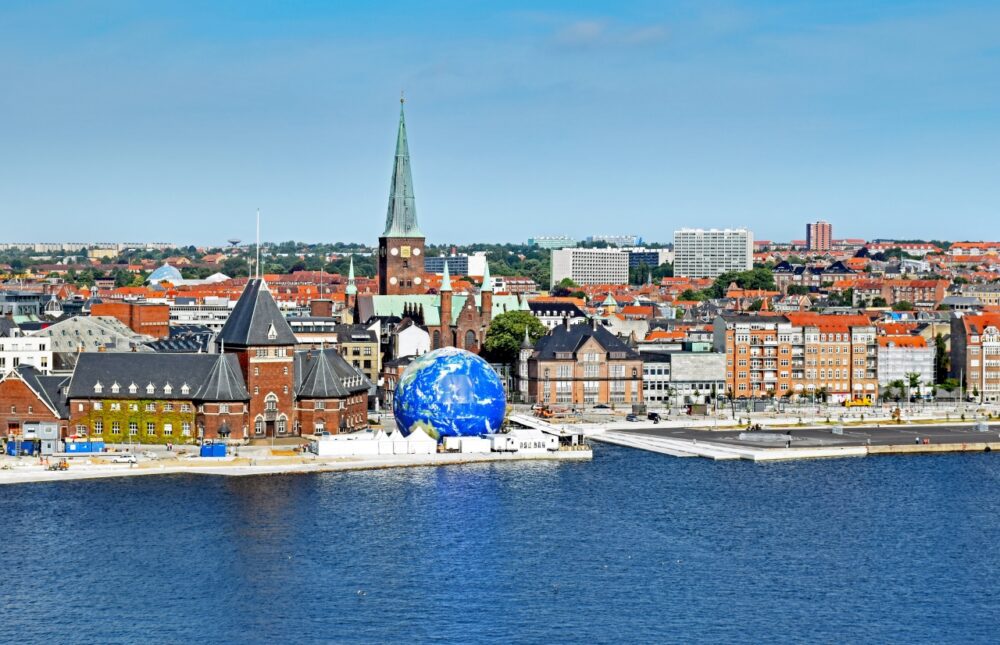
Denmark’s second-largest city, Aarhus, is an exciting mix of history and youthful energy, thanks to its large student population. I loved visiting ARoS Aarhus Art Museum, where the highlight was the Your Rainbow Panorama, a circular walkway on the roof with panoramic views of the city through colourful glass panels. It’s like walking through a rainbow and offers a fresh perspective on Aarhus below.
For a dose of history, head to Den Gamle By, an open-air museum that recreates a Danish town from the 18th to 20th centuries. Walking through the cobbled streets and old houses felt like stepping back in time. Aarhus is also known for its green spaces, and Marselisborg Forests offers peaceful walks along the coastline.
3. Odense

As the birthplace of Hans Christian Andersen, Odense has a magical, fairy-tale atmosphere that’s hard to resist. I started my visit at the Hans Christian Andersen Museum, where you can learn about the life and works of the famous author. Wandering through the narrow streets of the old town, you’ll see statues and plaques dedicated to his stories, making it feel like you’re inside one of his fairy tales.
Beyond its Andersen connection, Odense is a charming city with plenty of green spaces and cosy cafés. I took a leisurely bike ride along the Odense River, which is a great way to explore the city at a slower pace. For a quirky experience, visit the Funen Village, an open-air museum that recreates rural Danish life in the 19th century.
4. Aalborg
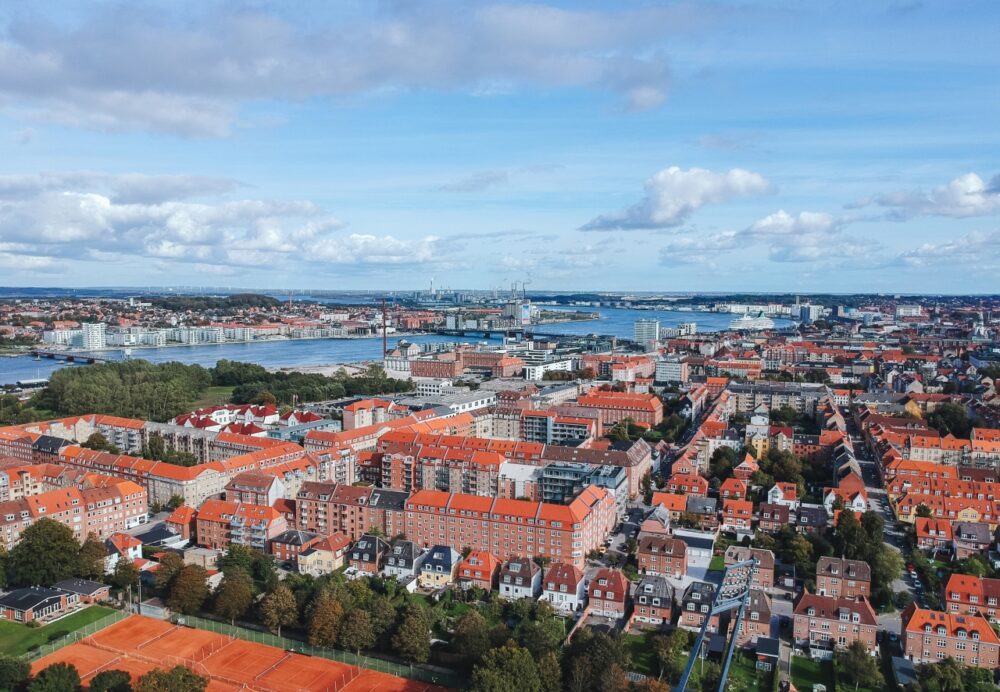
Aalborg, in northern Jutland, has transformed from an industrial city into a lively cultural hub. The city’s Utzon Center, designed by the same architect behind the Sydney Opera House, is a must-visit for anyone interested in modern architecture. Aalborg also has a fun side—head to Jomfru Ane Gade, Denmark’s longest street of bars and nightclubs, for a lively evening out.
For a more relaxed vibe, I recommend exploring Aalborg’s waterfront, where you can stroll along the Limfjord and enjoy views of the modern architecture mixed with historic buildings. The city also has a strong Viking heritage, and the Lindholm Høje burial site just outside the city is a fascinating look at Denmark’s ancient past.
5. Roskilde
Roskilde is just a short train ride from Copenhagen, making it an easy day trip. It’s famous for two things: its Viking heritage and its music festival. The Roskilde Festival is one of Europe’s largest music festivals, attracting top international acts and thousands of visitors every summer. But if music isn’t your thing, the Viking Ship Museum is reason enough to visit.
The museum features five Viking ships that were excavated from the fjord and offers boat-building workshops where you can see how the ships were made. Just a short walk from the museum is Roskilde Cathedral, a UNESCO World Heritage site where Danish kings and queens have been buried for centuries.
6. Skagen
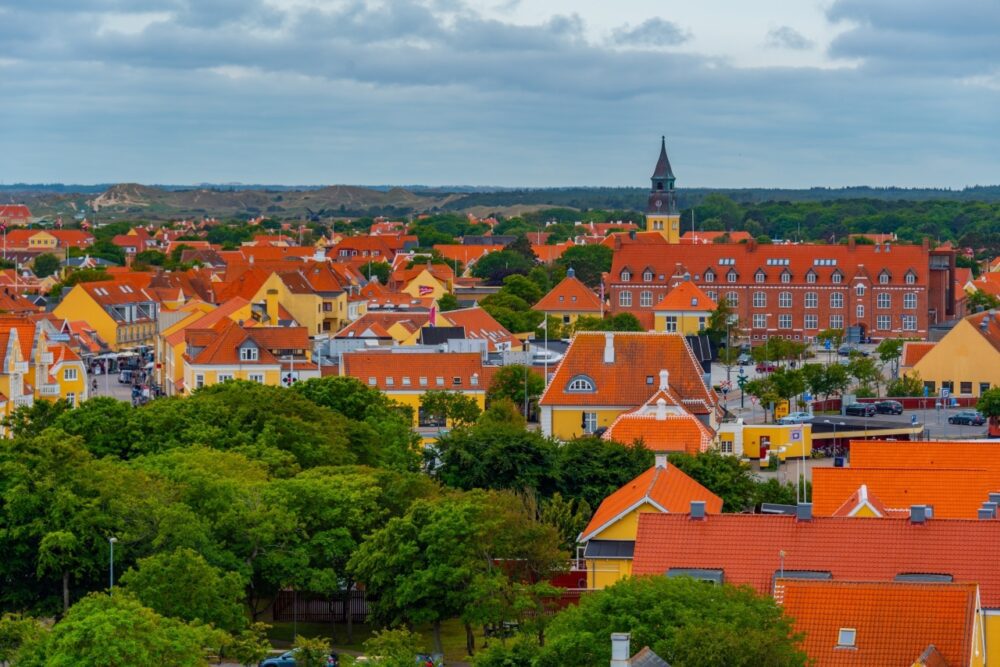
At the northernmost tip of Denmark, Skagen is where the North Sea meets the Baltic, creating a striking natural phenomenon. The town is famous for its beautiful light, which has inspired artists for centuries. The Skagen Museum is filled with works by the Skagen Painters, who were drawn to the area’s unique landscapes and coastal charm.
I took a walk to Grenen, the sandy point where the two seas meet, and watched the waves from both sides crash together. Skagen is also known for its quaint yellow houses and fresh seafood—don’t leave without trying the local herring or a seafood platter at one of the harbour restaurants.
7. Helsingor
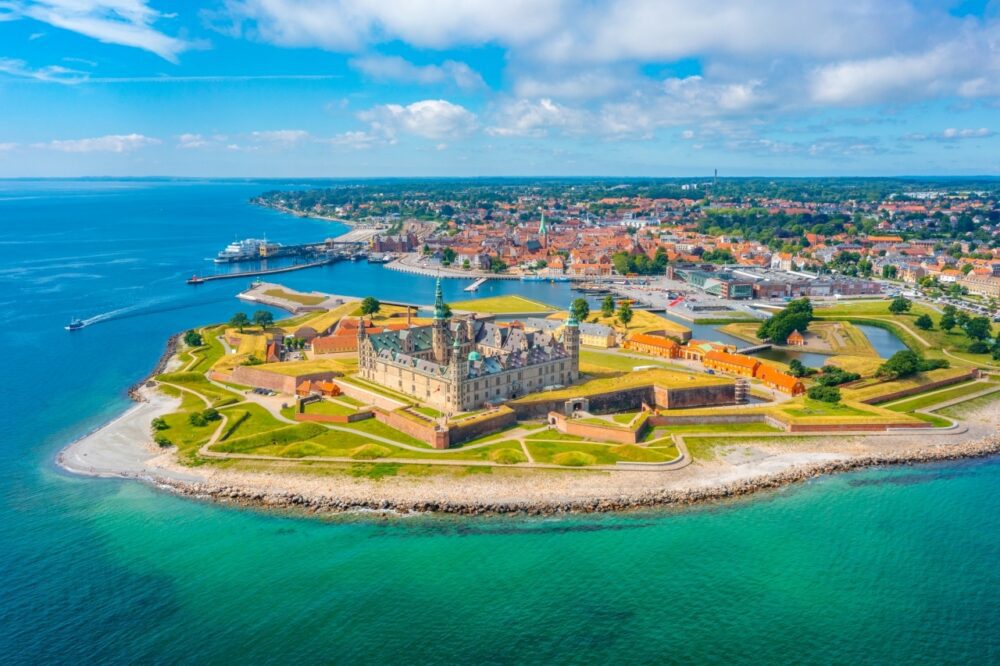
Helsingør, just a short ferry ride from Sweden, is home to Kronborg Castle, made famous by Shakespeare’s Hamlet. The castle itself is a beautiful example of Renaissance architecture, and exploring its grand halls and dark dungeons is a fascinating experience, especially if you’re a fan of literature. I joined a guided tour where actors performed scenes from Hamlet—a real highlight of my trip.
After visiting the castle, I took a stroll through Helsingør’s charming old town, where you’ll find narrow streets, cosy cafés, and colourful buildings. The Maritime Museum of Denmark, built into an old dry dock, is also worth a visit, with exhibits that tell the story of Denmark’s seafaring history.
8. Esbjerg
Esbjerg, on Denmark’s west coast, is the gateway to the Wadden Sea National Park, a UNESCO World Heritage site that’s famous for its tidal flats and birdlife. I joined a guided tour across the mudflats at low tide and learned about the unique ecosystem of the area. If you’re lucky, you can also spot seals basking on the sandbanks.
Esbjerg itself has a rugged charm, with its bustling harbour and maritime heritage. The Man Meets the Sea sculptures, four giant white statues overlooking the North Sea, are an iconic sight and a great spot for a sunset walk. The nearby island of Fanø is also worth a visit for its sandy beaches and quaint thatched-roof cottages.
9. Thy National Park
For those who love the great outdoors, Thy National Park in northern Jutland offers rugged landscapes and plenty of adventure. The park is a haven for hikers, cyclists, and birdwatchers, with its sand dunes, heathlands, and forests providing a perfect backdrop for outdoor activities. I spent a day hiking along the Cold Hawaii coastline, known for its excellent surfing conditions, and felt completely immersed in nature.
Thy National Park is also home to a variety of wildlife, including deer and birds of prey. If you’re into camping, there are plenty of spots to pitch a tent and enjoy the peace and quiet of Denmark’s wildest landscapes.
10. Wadden Sea National Park
The Wadden Sea National Park is one of Denmark’s most unique natural landscapes. The vast tidal flats are home to a wealth of wildlife, and the park is particularly famous for its birdlife. I joined a local guide for a walking tour across the seabed at low tide, an experience that felt almost otherworldly. It’s a great spot for nature lovers, with the chance to spot migratory birds and even seals along the coast.
The park’s small islands, such as Rømø, are also worth exploring. Rømø is home to some of Denmark’s widest beaches, perfect for a relaxing day by the sea or even windsurfing. Whether you’re into birdwatching, hiking, or just enjoying the vast, open landscapes, Wadden Sea National Park is a must-visit for nature lovers.
Travel Tips for Denmark
Getting Around Denmark
Denmark’s public transport system is modern, efficient, and easy to navigate. Trains and buses connect major cities like Copenhagen, Aarhus, and Odense, while ferries provide access to the many islands. Renting a bike is a great way to explore cities, especially in Copenhagen, where cycling is part of the culture and there are bike lanes everywhere. If you’re renting a car to explore rural Denmark, be prepared for well-maintained but sometimes narrow roads, and keep in mind that parking in city centres can be expensive.
Best Time to Visit Denmark
The best time to visit Denmark is between May and September, when the weather is warm, and the days are long, perfect for enjoying outdoor activities and festivals. Summer (June to August) is the high season, with plenty of events, open-air markets, and locals enjoying the beaches. Spring and autumn are also pleasant times to visit, with fewer crowds and mild weather. Winter can be cold and dark, but Copenhagen’s Christmas markets are magical, and it’s a great time to experience hygge (cosy Danish culture).
Passport and Visa Requirements for Denmark
Denmark is part of the Schengen Area, so EU/EEA citizens can enter with just an ID card. Visitors from countries like the US, UK, Canada, and Australia can stay visa-free for up to 90 days within the Schengen Zone. Your passport should be valid for at least three months beyond your planned stay. If you plan to visit neighbouring countries like Sweden or Germany, make sure to check their entry requirements, though border checks within the Schengen Zone are minimal.
Currency and Banks in Denmark
Denmark uses the Danish Krone (DKK), not the euro. Credit and debit cards are widely accepted across the country, including at restaurants, shops, and even for public transport. ATMs are easy to find in cities and towns, but it’s always good to carry some cash, especially for smaller purchases or when visiting rural areas. Be aware that Denmark is largely cashless, and many places may prefer card payments over cash.
Language and Useful Phrases to Know
The official language is Danish, but most Danes speak excellent English, especially in urban areas. That said, learning a few basic Danish phrases will be appreciated. Try “Hej” (hello), “Tak” (thank you), and “Undskyld” (excuse me). In more rural regions or smaller towns, showing an effort to speak Danish can be a nice way to connect with locals, even though you’ll have no trouble communicating in English.
Budgeting and Costs for Denmark
Denmark is known for being one of the more expensive countries in Europe, but with some planning, you can manage on a budget. Public transport and bike rentals are affordable, and you can save on accommodation by staying in hostels or renting Airbnbs. To cut down on food costs, try local markets or street food, like smørrebrød (open-faced sandwiches), instead of dining at restaurants. Free activities, like exploring Tivoli Gardens (if you avoid the rides), or visiting Copenhagen’s many parks and harbours, can also help balance your budget.
Conclusion
Denmark may be small, but it’s a country that offers an incredibly rich and varied travel experience. From the stylish streets of Copenhagen to the windswept beauty of Skagen, every corner of Denmark has something unique to offer. It’s a place where history and modernity live side by side, where you can explore Viking ships in the morning and dine at a Michelin-starred restaurant in the evening.
What makes Denmark truly special, though, is the Danish way of life—easy-going, environmentally conscious, and filled with hygge. It’s a country that invites you to slow down, enjoy the moment, and appreciate the beauty in everyday life. Whether you’re a culture lover, nature enthusiast, or foodie, Denmark will leave you with lasting memories and a strong desire to return.
